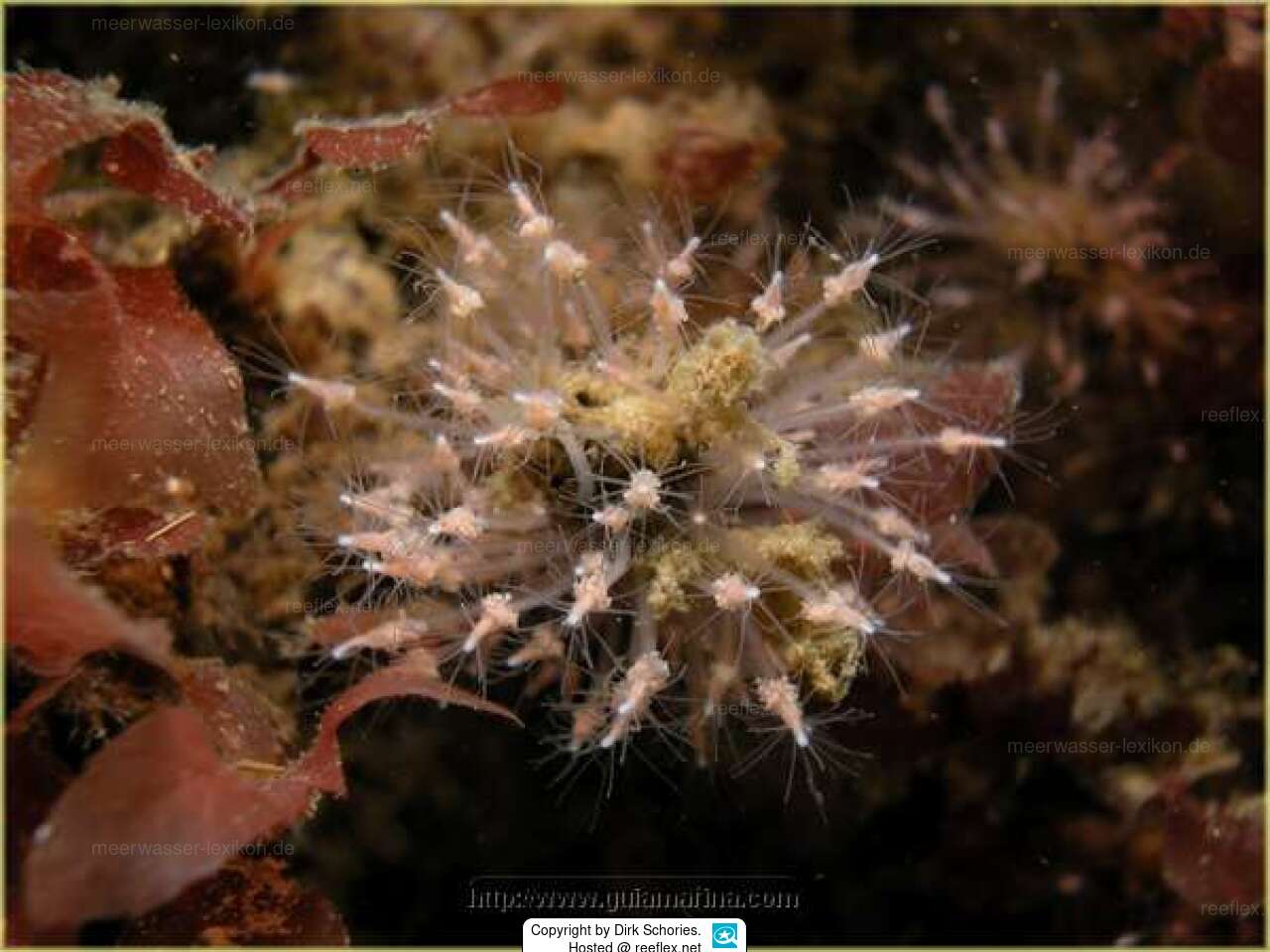Info
Clava multicornis (Forsskål, 1775)
Clava multicornis is a sessile hydrozoan that lacks or is not known to have a planktonic medusa stage.
The hydrozoan is native to the North Atlantic and is found from Long Island to Labrador, Iceland, the White Sea, and the Bay of Biscay.
It was introduced to San Francisco Bay, California, but has not been collected there for more than 50 years.
However, in 2013, extensive colonies were found on floating docks in Coos Bay, Oregon.
The species can colonize on a variety of substrates, including eelgrass, mussel shells, rocks, pilings, and buoys.
Colonies have also been found on the native mussel Mytilus trossulus on floating docks.
This colonial hydroid can occur in two forms, either as a diffuse network of stolons with scattered polyps or as a dense mat of stolons with many polyps.
The stolons are filamentous, and the polyps grow directly out of it, reaching up to 25 mm in height.
The polyps have 30 to 40 tentacles and have reproductive organs located on short branches under the tentacles.
The polyps are pink, white or red.
The physical shape of the colony is variable and is probably determined by a number of environmental factors such as the type of substrate, exposure to tides, food supply, and water movement.
Sexual reproduction:
Male reproductive organs are bluish, female reproductive organs are reddish.
Synonyms:
Clava cornea Wright, 1857
Clava diffusa Allman, 1863
Clava leptostyla L. Agassiz, 1862
Clava nodosa Wright, 1863
Clava parasitica Gmelin, 1788
Clava squamata (Müller, 1776)
Coryne squamata (Müller, 1776)
Hydra multicornis Forsskål, 1775
Hydra squamata Müller, 1776
Clava multicornis is a sessile hydrozoan that lacks or is not known to have a planktonic medusa stage.
The hydrozoan is native to the North Atlantic and is found from Long Island to Labrador, Iceland, the White Sea, and the Bay of Biscay.
It was introduced to San Francisco Bay, California, but has not been collected there for more than 50 years.
However, in 2013, extensive colonies were found on floating docks in Coos Bay, Oregon.
The species can colonize on a variety of substrates, including eelgrass, mussel shells, rocks, pilings, and buoys.
Colonies have also been found on the native mussel Mytilus trossulus on floating docks.
This colonial hydroid can occur in two forms, either as a diffuse network of stolons with scattered polyps or as a dense mat of stolons with many polyps.
The stolons are filamentous, and the polyps grow directly out of it, reaching up to 25 mm in height.
The polyps have 30 to 40 tentacles and have reproductive organs located on short branches under the tentacles.
The polyps are pink, white or red.
The physical shape of the colony is variable and is probably determined by a number of environmental factors such as the type of substrate, exposure to tides, food supply, and water movement.
Sexual reproduction:
Male reproductive organs are bluish, female reproductive organs are reddish.
Synonyms:
Clava cornea Wright, 1857
Clava diffusa Allman, 1863
Clava leptostyla L. Agassiz, 1862
Clava nodosa Wright, 1863
Clava parasitica Gmelin, 1788
Clava squamata (Müller, 1776)
Coryne squamata (Müller, 1776)
Hydra multicornis Forsskål, 1775
Hydra squamata Müller, 1776







 Dr. Dirk Schories, Deutschland
Dr. Dirk Schories, Deutschland




